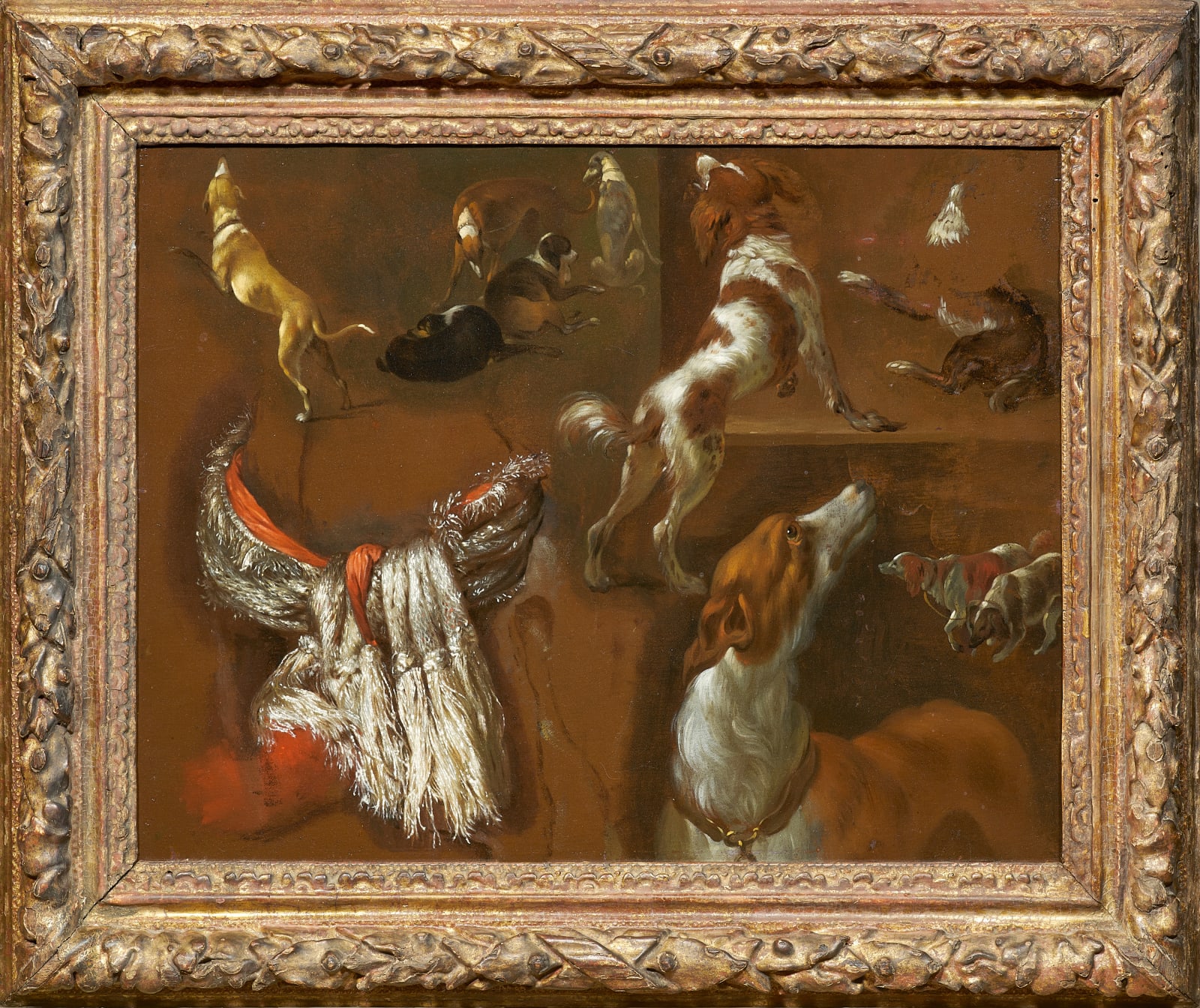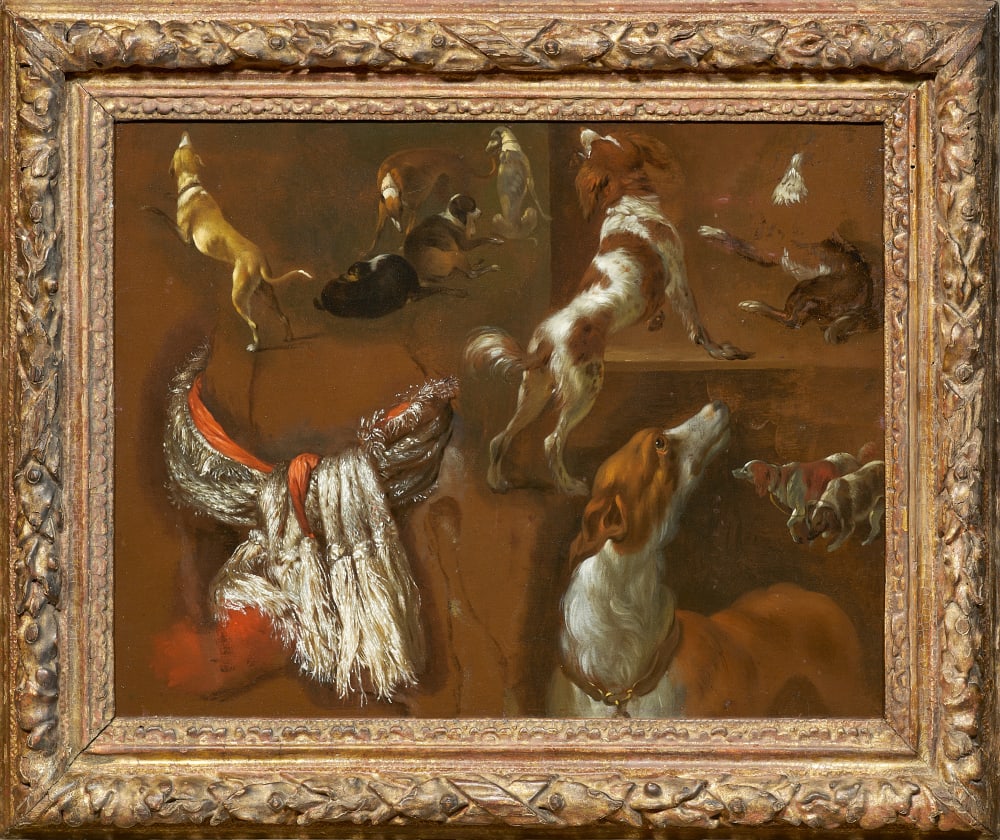 Painting with frame
Painting with frame
 Verso of the painting
Verso of the painting
 Detail of our panel
Detail of our panel
 Detail of our panel
Detail of our panel
Netherlandish School of the 17th century/ Ecole flamande du 17ème siècle
24 x 32.5 cm
Further images
Provenance
Alexis Gregory Collection (1936 - 2020), founder of Vendome Press (sold for the benefit of his foundation)
Sotheby's New York - 22 January 2004 - lot 2016 (as attributed to Hyacinthe Rigaud)
This painting is the painted equivalent of a drawn study. It presents ten studies of hunting dogs and one study of a stole, in a great apparent disorder that conceals a rigorous organization in four quarters.
The studies of the stole and of two of the dogs (the greyhound in the lower right and the spaniel in the upper right quarter) are quite advanced, while those of the other dogs are barely sketched. The dog in the upper right-hand corner, for example, is only partially represented. The dogs' coats of various colors - brown, sandy, gray or black - stand out against the warm brown background, illuminated by the brilliance of their white hair. This color, probably executed with ceruse white, is repeated in the study of the stole in the lower left corner, whose red color warms the composition.
The purpose of this stole is enigmatic: we think that it is probably a neckband, but it could also be a sash or a saddle ornament. To the right of this stole, we note the sketch of a long animal leg, depicted in the opposite direction to the rest of the composition. This could be a horse's leg, supporting the hypothesis of a saddle ornament.
We have tried in vain to identify the author of this study, which is presumably preparatory to a portrait of a hunter surrounded by his hounds, but have been unable to find a fully convincing attribution. Although the painting has previously been attributed to Hyacinthe Rigaud, all indications point to a Netherlandish work from the second half of the 17th century.
We have chosen to frame this painting in a Louis XIII period frame, whose original, well-worn gilding delicately enhances the shimmering whites of the painting amidst the brown and orange chromatic variations of the composition.






